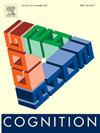Maintaining visual stability in naturalistic scenes: The roles of trans-saccadic memory and default assumptions
IF 2.8
1区 心理学
Q1 PSYCHOLOGY, EXPERIMENTAL
引用次数: 0
Abstract
How is visual stability maintained across saccades? One theory poses the visual system has an underlying assumption that the visual world has not changed during the saccade, and scrutinization of trans-saccadic memory occurs only when there is strong evidence against external stability. As support, prior studies demonstrated a “blanking effect”, where sensitivity to trans-saccadic change is increased when a short blank is inserted immediately after saccade onset. However, there remains a considerable gap between these findings, discovered with simple visual stimuli, and understanding trans-saccadic stability for rich naturalistic scenes. Here we tested human observers in a blanking paradigm with naturalistic scene images, using artificial intelligence (AI)-generated “scene wheel” stimuli that varied in a continuous and quantifiably controlled manner. Psychometric modeling revealed that inserting a brief blank screen during a saccade increased sensitivity to trans-saccadic scene changes and decreased the stability bias. These effects occurred only when observers made actual eye movements, but not when eye movements were simulated with retinal image shifts. These findings demonstrate that trans-saccadic memory of complex scenes and an overarching stability assumption work in tandem to achieve stable perceptual experience in natural environments.
在自然场景中维持视觉稳定性:跨跳记忆和默认假设的作用
如何在扫视过程中保持视觉稳定性?一种理论认为,视觉系统有一个潜在的假设,即视觉世界在扫视期间没有改变,并且只有在有强有力的证据反对外部稳定性时,才会对跨扫视记忆进行仔细检查。作为支持,先前的研究证明了“空白效应”,即在扫视开始后立即插入短空白,对跨扫视变化的敏感性增加。然而,这些发现在简单的视觉刺激下发现,与理解丰富的自然场景的跨眼稳定性之间仍然存在相当大的差距。在这里,我们使用人工智能(AI)生成的“场景轮”刺激以连续和可量化控制的方式变化,在自然场景图像的空白范式中测试人类观察者。心理测量模型显示,在扫视期间插入短暂的空白屏幕增加了对跨扫视场景变化的敏感性,并减少了稳定性偏差。这些效果只有在观察者进行实际的眼球运动时才会出现,而在用视网膜图像移动模拟眼球运动时则不会出现。这些发现表明,复杂场景的跨跳记忆和总体稳定性假设协同工作,在自然环境中获得稳定的感知体验。
本文章由计算机程序翻译,如有差异,请以英文原文为准。
求助全文
约1分钟内获得全文
求助全文
来源期刊

Cognition
PSYCHOLOGY, EXPERIMENTAL-
CiteScore
6.40
自引率
5.90%
发文量
283
期刊介绍:
Cognition is an international journal that publishes theoretical and experimental papers on the study of the mind. It covers a wide variety of subjects concerning all the different aspects of cognition, ranging from biological and experimental studies to formal analysis. Contributions from the fields of psychology, neuroscience, linguistics, computer science, mathematics, ethology and philosophy are welcome in this journal provided that they have some bearing on the functioning of the mind. In addition, the journal serves as a forum for discussion of social and political aspects of cognitive science.
 求助内容:
求助内容: 应助结果提醒方式:
应助结果提醒方式:


